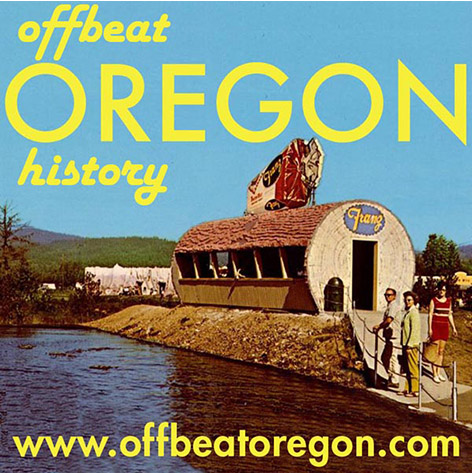
Looking for more?
On our Sortable Master Directory you can search by keywords, locations, or historical timeframes. Hover your mouse over the headlines to read the first few paragraphs (or a summary of the story) in a pop-up box.
... or ...
LEBANON, LINN COUNTY; 1930s, 1940s, 1950s:
Famous dance hall hosted Berry, Cash, many more
Audio version: Download MP3 or use controls below:
|

“One person remembered how it was expensive to get a taxi cab so often the men would combine their change and jump onto an old Model T, filling the car and leaving men hanging off of the running boards on their way to Cottonwoods,” Rush writes. “The images of men hanging off of the running boards on their way to a performance of Hazel Fisher and Her All Girl Band, the most popular of all the bands during the war, is enough to make anyone laugh.” At the end of the evening, the men would pile back onto the old flivver again — usually pretty drunk by this time — and straggle back to base. Gladys Wiley actually instituted a curfew at the Cottonwoods to help encourage them to get back on time. The golden age: 1945-1960The Cottonwoods really came into its own, and made a nationwide name for itself among performers, in the years after the war. That’s when the really big names — Fats Domino, Chuck Berry, Hank Snow, Johnny Cash — came to play. But in 1960, Gladys closed the dance hall for reasons related to the declining health of a loved one, and the golden age was over. A few months after she did this, the dance hall reopened under new management, but apparently the magic was gone, because it was closed again before the end of 1961. It straggled on for a few years, closing and reopening a few more times as different people tried to make a go of it. For some time in the 1970s, it was probably Oregon’s most rural disco nightclub. Eventually, in the 1980s, it became a bingo hall and community center. The end came in the early 1990s, when a windstorm tore the roof up and ruined the structure. It was demolished, the lot leveled, and all that remained was a rusty sign by the roadside, where it stayed for years before finally being removed. The Cottonwoods todayLocals still remember the Cottonwoods, and use it as a point of reference (“turn left at the Cottonwoods”) even though it’s been gone for almost 20 years. With it is gone an era in Oregon history, one in which dance halls hummed and throbbed with lively music on a Saturday night and neighbors met each other for pot-luck socials on a Sunday afternoon. That spirit is mostly a memory, and the best we can do is hope it comes back someday to reanimate those rural community centers and grange halls that are quietly fading away, or have already vanished, in places like Riverside and Crowfoot and St. Paul. Maybe if it does, the Cottonwoods will be rebuilt. Historian Creighton will be ready if it is. He’s the proud owner of a small pile of lumber — the last few pieces of the dance floor installed in the late 1930s. “I talked to the guy who tore the building down and found out who bought the dance floor,” he told Lebanon Express reporter Matt DeBow. “The guy who bought the flooring still had a little bit left stored in a barn. I just could not resist buying the last bit of it.”
|
©2008-2023 by Finn J.D. John. Copyright assertion does not apply to assets that are in the public domain or are used by permission.

